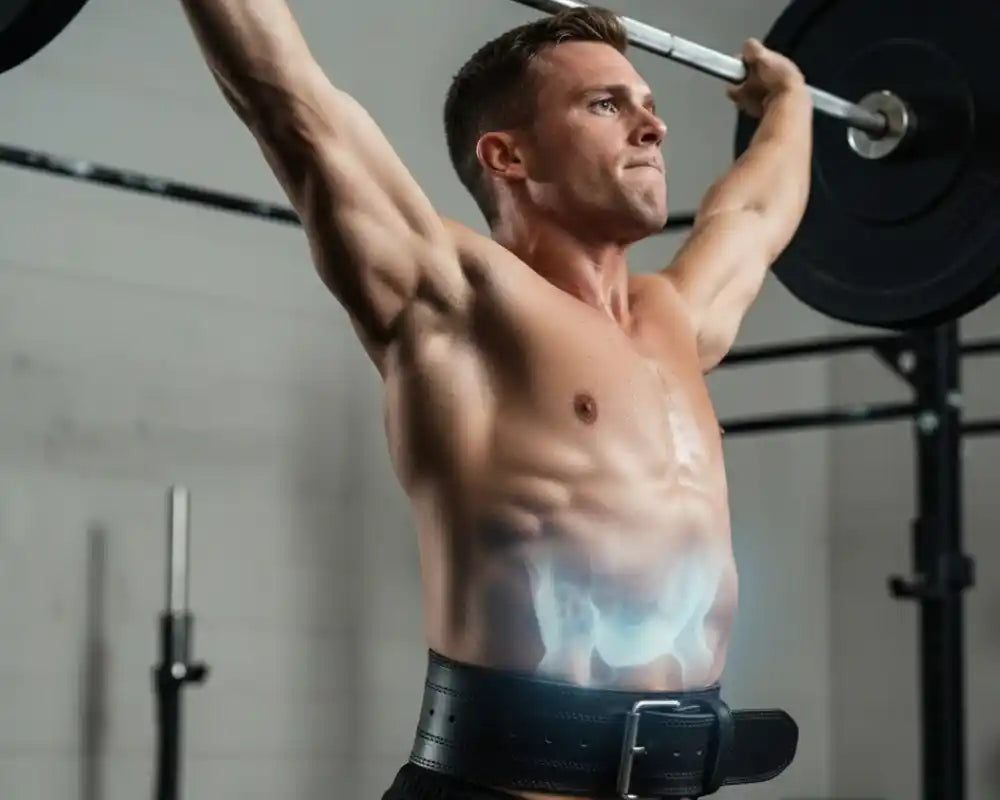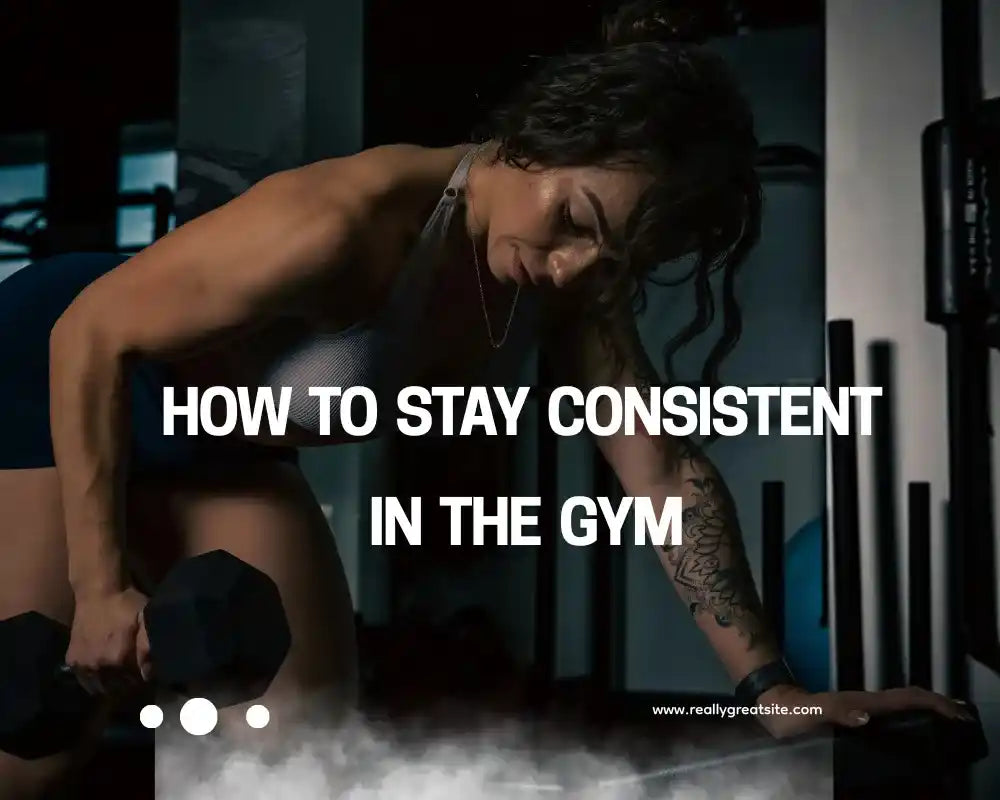A hernia can end a lifter's progress faster than any failed rep. One wrong pull, one forced breath, and you feel that sharp groin pain.
A SIGNAL YOUR CORE GAVE OUT UNDER PRESSURE.
A weightlifting hernia occurs when part of your tissue pushes through a weak spot in the abdominal wall. It's common among lifters who train heavy without learning to brace or protect their core.
The good news: hernias are preventable. You can lift hard, stay strong, and protect your midsection by applying a few key techniques that every serious athlete should master.
What Happens During a Weightlifting Hernia
During heavy lifts like squats and deadlifts, your core creates internal pressure to stabilize your spine. If that pressure becomes uncontrolled due to poor breathing, bad posture, or a weak abdominal wall, the force escapes through the lowest area. That's how hernias from lifting start.
Studies show heavy physical exertion, especially in gym and labor settings, is a leading cause of inguinal hernias.
One review published on PubMed Central found that more than half of hernia cases involved high physical strain, such as heavy lifting.
Pain Points Lifters Face
- Many lifters ignore early warning signs, such as a dull ache in the groin, lower abdomen pressure, or swelling after a workout.
- They push through, thinking it's just muscle fatigue.That mistake leads to long rest periods, surgeries, and lost training time.
The goal isn't only to train harder. It's to train smarter.Every rep should build strength without breaking structure.
Causes of a Weight Lifting Hernia
1. Poor Breathing Technique
Holding your breath too long or exhaling at the wrong time spikes internal pressure.
Improper use of the Valsalva maneuver, which involves bracing without a controlled release, is one of the most common causes.
2. Weak Core Muscles
A weak abdominal wall can't resist the load. Without deep core engagement, pressure has nowhere to go except through tissue gaps.
3. Incorrect Belt Use
A lifting belt should reinforce your brace, not replace it. Wearing it too high or too loose does nothing. Too tight, and it disrupts breathing.
This mistake is often the cause of what lifters call a belt hernia.
4. Ego Lifting
Jumping weight before your body adapts is reckless. Most hernia and lifting weights injuries happen when lifters chase numbers, not control.
5. Ignoring Fatigue
Overtraining weakens tissue recovery. A tired body relaxes more quickly under stress.
How to Prevent a Hernia While Lifting
1. Learn to Brace Properly
Inhale deeply through your nose. Push the air down into your belly, not your chest.
Tighten your abs as if preparing for a punch. Maintain that pressure throughout the lift.
This protects your spine and abdominal wall from overstrain.
A study in the Sports Health Journal confirmed that proper bracing improves intra-abdominal stability and reduces injury risk.
2. Strengthen Your Core Every Week
Add planks, bird dogs, and dead bugs to your warm-up.
These movements train deep stabilizers like the transverse abdominis, the muscle that keeps your midsection tight under load.
3. Master the Belt
If you use one, learn how to wear a hernia belt correctly.
- Place it just above your hips.
- Pull it snug but not suffocating.
- Use it for heavy compounds, not every set.
-
If you're recovering from surgery or weakness, ask your doctor how long you should wear a hernia belt based on your condition.
4. Lift with Control
Every rep counts. Keep your spine neutral, shoulders back, and core tight.
In squats and deadlifts, don't let the bar pull you forward; that's how a deadlift hernia starts.
Form should never bow to ego.
5. Warm Up and Recover Right
- Dynamic stretching and light activation drills before lifting increase blood flow.
- After lifting, mobility and core breathing help your muscles decompress.
- Protect your core with precision gear designed by movement scientists.
Body Reapers lifting belts are doctor-built and athlete-approved, engineered for real lifters who value orthopedic precision.
TRAIN HARDER, RECOVER FASTER, AND STOP INJURIES BEFORE THEY START.
Can You Lift Weights With a Hernia?
Many lifters ask, "Can I lift weights with a hernia?"
Yes, but only after a doctor clears you. Light training can resume once the tissue has healed, but pressure must be managed carefully.
- Stick to bodyweight or cable movements that don't strain your abdomen.
- Skip max-effort lifts and deep core compression.
- Controlled breathing and moderate bracing help you train safely during recovery.
- If discomfort returns, stop immediately.
Explore More: How to Prevent Injuries Using Gym Belts: A Comprehensive Guide
Best Lever Belts for Powerlifting, Weightlifting & Gym
FAQs
1. Can I lift weights if I already have a small hernia?
A: Only after consulting your doctor. Small hernias can worsen under pressure, even during warm-ups.
2. What's the difference between sports hernia and inguinal hernia?
A: A sports hernia involves soft tissue strain in the groin area. Inguinal hernia features actual tissue protrusion through the abdominal wall. Both require medical attention.
3. Should I wear a belt for every heavy set?
A: No. Save belts for near-maximal efforts. Training without a belt builds stronger core stabilization.
4. What is the most common hernia from weightlifting?
A: The inguinal hernia is most common. It appears in the groin area. This spot holds a natural weakness, particularly for men. Poor bracing during compound movements creates the stress needed for the hernia to emerge.
5. Does a weightlifting belt prevent a hernia?
A: A weightlifting belt aids prevention indirectly. It provides a rigid surface. This helps you execute proper bracing to prevent a hernia by increasing IAP and stabilizing the spine. It does not structurally replace compromised tissue like a medical truss.
Hernias don't happen by chance; they occur from habit.
Your form, your breathing, your ego, each choice affects your safety.
Every smart lifter builds from the inside out. Control your pressure. Strengthen your core. Respect your recovery. Train with gear made by experts who study human movement.
Body Reapers brings orthopedic precision to every product, including belts, sleeves, and supports built for how your body actually works.
Shop Body Reapers and lift with confidence, pain free and powerful.





Leave a comment
This site is protected by hCaptcha and the hCaptcha Privacy Policy and Terms of Service apply.